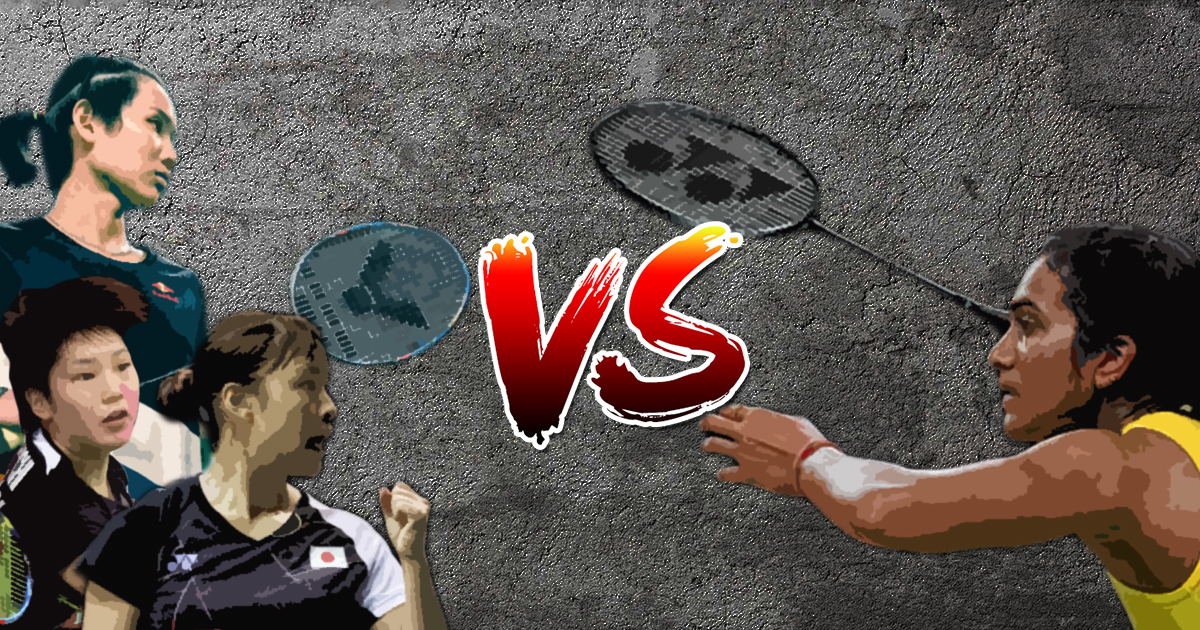Can PV Sindhu slay the demons from her past at the 2018 World Championships

PV Sindhu will be India's biggest hope in the ongoing World Championships, where fans will hope the World No. 3 escapes the burdens of the past that have weighed her down so far. A closer look at her losses reflect issues with the mental and physical approach and rather than shaky confidence.
After Sindhu dethroned Saina Nehwal as the poster girl of Indian badminton with her performance in the 2016 Rio Olympics, the nation had taken notice of her abilities once again a year later again in the 2017 BWF World Championships in Glasgow, when she took on Japan’s Nozomi Okuhara in one of the most epic finales in modern badminton. The match had lasted a whopping 105 minutes with Sindhu emerging as second-best losing the match 19-21, 22-20, 19-20.
“It is one of the memorable and longest matches. I was almost there but I think I just could not win it. It is another year and I have to start fresh. I have to play with a renewed energy. I should not think about that final,’’ Sindhu had said.
While she has rightly chosen to take only the positives from the match and in all her matches since then optimism hasn’t been her strongest forte. Since the Glasgow final, Sindhu has reached three semi-finals and five finals of major tournaments, managing to win only once. While she came across as a valiant warrior last time in Scotland, who was persistent right till the last minute, her repeated failures and struggle to learn from her mistakes has reduced her to a one-trick pony.
Still, Sindhu remains India’s biggest hope going into the World Championships that started today since Kidambi Srikanth has been going through a terrible slump of late, managing to reach only one semi-final this year (Malaysia Open), while the 28-year-old Saina Nehwal has faded, as former champions do, with rare successes here and there
While India had jointly rejoiced at Sindhu’s Rio success, after she became the first Indian woman to get a medal on the world’s biggest stage, the celebrations for second and third position finishes have mellowed down over the years. And given her talent, it is only fair that we expect the same outcome from her as we do from Virat Kohli and co in cricket.
Sindhu remains amongst the elite few in women’s badminton who are ruling the international circuit and has consequently been pitted against her contemporaries regularly whenever she has been anywhere near lifting a title. In the five finals that Sindhu has reached since 2017 World Championships, she has faced Nozomi Okuhara twice, while Akane Yamaguchi, Tai Tzu Ying, and Beiwen Zhang have all stood in her path once. And barring the Korea Open final, where Sindhu avenged the World Championship final defeat within just three weeks of that epic final, she has lost all the other four. She has also reached three semi-finals since then facing Yamaguchi twice and Tai Tzu once, losing all three.
While reaching the deep end of most major tournaments, when others have squandered their chances, is commendable, her inability to shift gear at the right moment has been equally frustrating. A closer look at her failures highlights how Sindhu has struggled to save break points and more importantly in keeping up with her opponents in rallies during the closing stages of a game, all of which correctly labels her as a choker.
Current World No. 2 Yamaguchi has crossed Sindhu’s path the most in the eight encounters, in semi-finals and finals, she has played since Glasgow, and has definitely cracked the code of beating her by winning all three times. Popularly known for her unparalleled stamina, Yamaguchi has taken Sindhu to the deciding game twice in three encounters - 2018 All England Open (21-19, 19-21, 18-21) and 2017 Dubai World Superseries finals (21-15, 12-21, 19-21). The 2017 French Open was the only exception when a seemingly unfit Sindhu was beaten 21-14, 21-9 with considerable ease as Yamaguchi constantly attacked her backhand.
Barring the French Open clash, Sindhu has always started games better against Yamaguchi before eventually running out of steam that brings her downfall and the pattern was very similar in both England and Dubai. After going gung-ho, en route to winning the first game both occasions, Sindhu would let Yamaguchi have the second one in order to conserve energy for the decider. In All England 2017, Sindhu stayed shoulder to shoulder with the Japanese till 14-13 in the second game, before letting Yamaguchi race to 19-14. In the decider again, a rejuvenated Sindhu had raced to a comfortable 11-7 lead before running out of fuel as Yamaguchi caught up with her at 14-14 and won seven out of the next eleven points to take the game 21-18. The 2017 Dubai Superseries final had an identical ending as well, with Sindhu, who was trailing by just two points at the break, ended up conceding the game 21-12. To top that, Sindhu’s nerves at crucial moments also let her down with the Indian only able to save four game points in these two matches.

World No. 1 Tai Tzu Ying, for all her ranking and terrific skill set, hasn’t surprisingly been that imposing a figure for the Indian ace, even though she enjoys a 9-3 lead over her Indian counterpart in their head to head battles. Sindhu’s power and aggression have often proved to be
In the 2017 Hong Kong Open, Sindhu was hot on Tai Tzu’s heels till the break in both the games (11-8 and 11-9 respectively) but as soon as Tai Tzu raised her game, the Indian crumbled. While the first game saw Sindhu let Tai Tzu get away with a 17-13 lead that couldn’t be recovered, the second game saw the Taiwanese suddenly picking up the pace from 11-9 to 18-12, with Sindhu losing yet again. The pattern was similar in Malaysia Open semis’ first and third games, which Sindhu lost 21-15, 21-11, as well. The second game, that Sindhu won 21-19, saw the Indian never letting her Taiwanese counterpart, who came up with an unusually high number of unforced errors, establish a lead of more than two points after the midgame interval. And that win should work as a template for the World No. 3 when she takes on the World No. 1 next time and it appears she might have already taken note of it. When asked about the prospect of meeting the Tai Tzu in the advanced stages of the tournament, Sindhu said, “I am confident of beating her now.”
Next up is the player who has surpassed Carolina Marin as Sindhu's main nemesis - Nozomi Okuhara. It is really unfortunate that Sindhu has faced possibly the diminutive Japanese only twice since that evening in Glasgow. The Japanese definitely has one of the most
After giving her all in the first game that she won 22-20, Sindhu was happy to take the backseat in the second one settling for 11-21 loss. She eventually brought back her power game in the decider going all out to oust Okuhara 21-18. But, that Sindhu was more self-confident, didn’t lose her nerve and more importantly, switched on her aggression at any moment. In the recent Thailand Open, where the Japanese beat Sindhu 21-15, 21-18 with relative ease, the Indian ace looked way more complacent and ready to settle for a runner-up spot.
One of the biggest reasons why the likes of Sindhu and Srikanth broke into the fore was their aggressive play and physicality. However, following the emergence of physically imposing players like Sindhu, Srikanth, Viktor Axelsen among others, the Chinese and Japanese players have reportedly been training with sparring partners who stand on elevated platforms. Sindhu, on the other hand, has shown very little hints of tactical tweaks in her game although Pullela Gopichand is now said to have chalked out new training regimes that will add more dimensions to her game.
The smaller sized likes of Beiwen Zhang, Saina Nehwal, and Yamaguchi have all managed to surprise Sindhu in the recent past. Their sudden bursts of aggression and pace, changing their original defensive playing style to mix up to smashes every now and then, taking an all-out-attack mode, have all taught us that the Indian ace would be needing more of such surprise elements in her game if she is to get back to her victorious self in China.

Comments
Sign up or log in to your account to leave comments and reactions
0 Comments